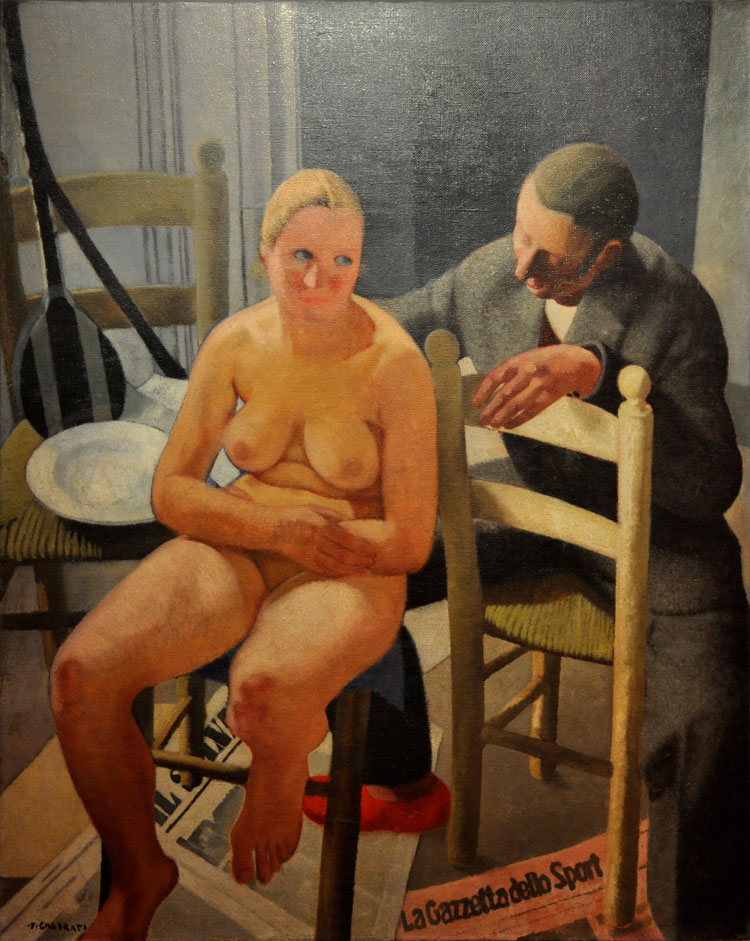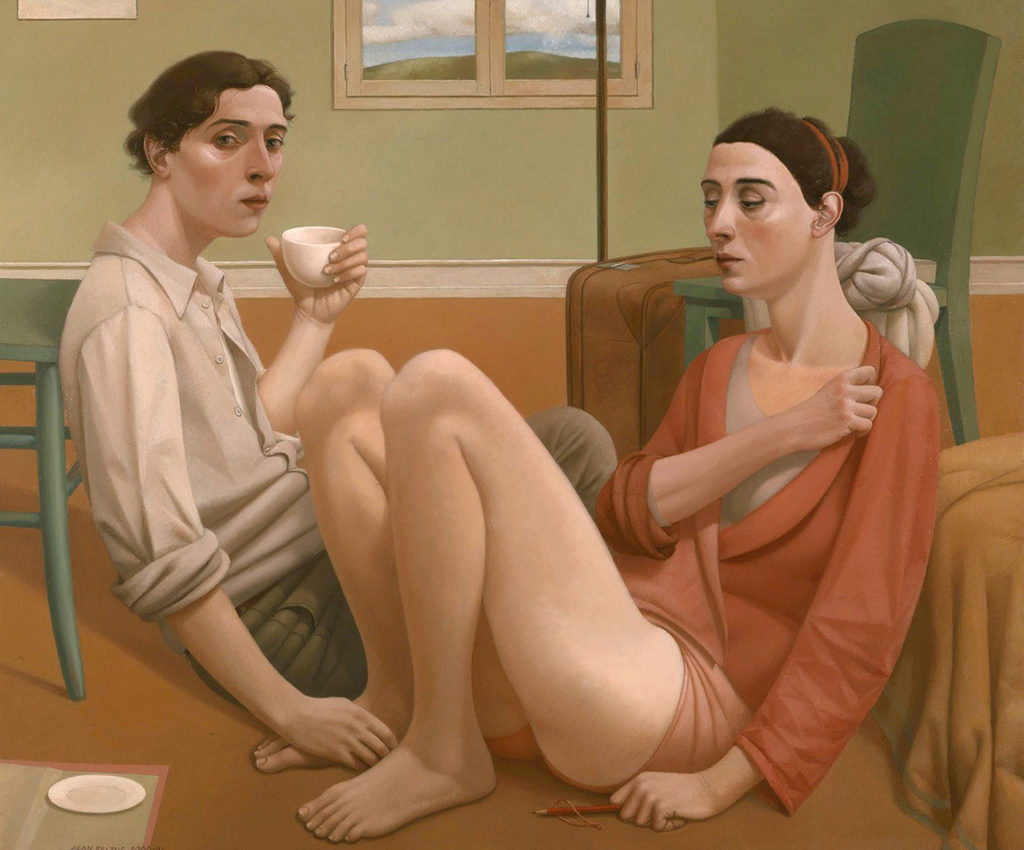I first saw Felice Casorati’s Susanna when I was wandering through the Galleria Nazionale d’Arte Moderna e Contemporanea in 1971, during my fellowship at the American Academy in Rome. Then and there, that one painting stopped me and held me captivated. The other rooms I had just seen disappeared from my consciousness. There it was: a work that had everything I could want for my own paintings.
Casorati’s Susanna shows two figures. One is a nude woman, sensual but seemingly unaware of her sensuality. She doesn’t look like someone who has such concerns. She is comfortable in her body and feels safe in the presence of the other figure, a man dressed in a gray suit. Perhaps he is talking quietly to her as they sit close together. She could be listening to what he is telling her, but we don’t know if he is speaking. They could just as well be turned inward in their own thoughts. We don’t know why he is clothed and she is naked. The one foot of the man that we can see wears a red slipper: it would be unlikely to be a red shoe, because few men’s shoes would have been red when the painting was made. Slippers would suggest these two people are at home.
When I realized this painting might direct me in my own work, I tried to understand what made it so important to me. I see Susanna as an intimate, domestic scene. While it remains quiet and mysterious, it is also evocative of something powerful and unexplained about the relationship between these two people. It shows everything I would want a painting to have.

Felice Casorati was not a painter of highly refined, nuanced, detailed, and polished descriptive surfaces. He was not a realist in that sense, but rather a figurative painter who described things well, without excesses of any kind. Susanna’s knees and face are specific, well-observed, and anatomically correct forms made of carefully placed spots of color. The contours of her legs are precise in their reflection of the way one’s body changes with positions, and the pressing of one volume against another: Susanna’s thighs are made wider by the seat of the chair under them. The turn of her head and neck, and the shape of her collarbones and shoulders, are beautifully portrayed, but not overdone. The painting of her nudity is natural and descriptive, not sexualized and not there for anyone else. Susanna is not treated as an idealized goddess figure. Nor is she a model posing for a painter. She is simply a naked woman sitting quietly in the presence of a man who is fully dressed. And we know not why. To me, this is marvelous. As painters, we can create our own reality, or our own unreality.
I studied the painting while thinking about how it might influence my own paintings. I saw how three chairs and the molding of a doorway divide the surface of the painting with horizontals and verticals and diagonals, while at the same time defining the space surrounding the two figures. I saw how darks and lights are meaningful in their placement as they move from the back upper edge of the canvas to the near bottom edge. Some newspapers spread casually under the feet of the two figures hold down the plane of the floor. Their laps and the seats of the chairs define a second horizontal plane above that of the floor. The painting is both simple and complex in terms of compositional structure, narrative, and how little or how much psychological content a painting might want to have.

After my two years at the American Academy in Rome, when I could no longer go down into the center of the city to see the painting, I had only a small black and white photograph to look at. On subsequent trips to Italy, I searched for a book on Casorati with the painting reproduced in color, but only found such books years later.
Today, I still look at this Casorati painting and each time I do, I am nurtured and inspired, feeling that same wonderment I felt that first time 48 years ago.
“Felice Casorati’s Susanna and My Paintings” is an excerpt from a memoir Alan Feltus is developing under the working title Awakenings, Becoming an Artist.
Alan Feltus (ANA 1993; NA 1994) was born in Washington, DC, in 1943 and grew up mainly in Manhattan. He attended the Tyler School of Fine Arts for one year, and then Cooper Union (BFA ‘66) and Yale (MFA ‘68). After graduate school, he taught at the School of the Dayton Art Institute for two years, was a recipient of the Rome Prize Fellowship (‘70-72), and then taught for another 12 years at American University. In 1987, Feltus moved to Italy. He has been represented by Forum Gallery in New York since the mid-1970s and is now also represented by Chris Winfield Gallery in Carmel, California.
